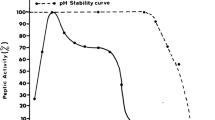Abstract.
When used endoscopically fibrin adhesives are injected through twin-lumen catheters, which can reach up to 180 cm in length. Because fibrinogen solutions have a high viscosity, significant delivery forces are necessary, resulting in discomfort for the operator. Therefore, the two predominant fibrin sealants were characterized with respect to their viscosity and the force needed for their injection. Viscosity was determined at 18°C, 25°C, and 37°C in a micro-Ostwald viscosimeter. Additionally, the maximum forces needed for injection through a 27-cm and a 160-cm catheter were determined at 25°C in an Instron materials testing machine. Compared with preparation A the viscosity of preparation B was 8.0–34.5 times higher at 18°C, 4.6–13.8 times higher at 25°C and 3.1–6.4 times higher at 37°C. In consequence, the delivery forces were 1.5–2.5 times (27 cm probe) and 3.4–4.5 times (160 cm probe) the values determined for preparation A. For preparation B a maximum load of 3.8 kg was necessary for injection. Assuming that different adhesive preparations have the same effect, a preparation of lower viscosity seems to be more suitable for use via long catheters than a preparation of high viscosity.
Similar content being viewed by others
Author information
Authors and Affiliations
Additional information
Received: 1 May 1998/Accepted: 28 May 1998
Rights and permissions
About this article
Cite this article
Nagelschmidt, M. Endoscopic use of fibrin adhesives . Surg Endosc 13, 80–82 (1999). https://doi.org/10.1007/s004649900905
Published:
Issue Date:
DOI: https://doi.org/10.1007/s004649900905




